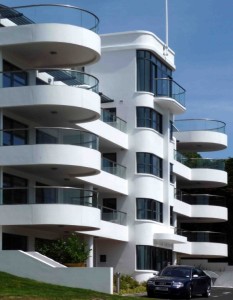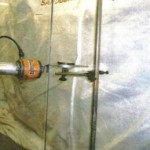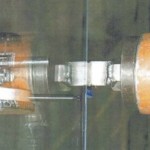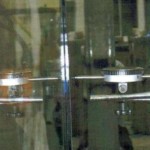Glass balustrades should be designed to withstand loads.
Loading requirements
 Glass balustrades loading requirements can be categorized into static and dynamic loading requirements.
Glass balustrades loading requirements can be categorized into static and dynamic loading requirements.
Due to the variety in application of a glass balustrade, there is a difference in required static loading capacity of the balustrade. Static loads appropriate to the type of accupancy for the building or structure are categorized according to application and position. Together with the application of the glass balustrades, two types of load applications are concidered:
- Horizontal line load (N/m)
- Point load (N)
Glass Balustrade Load Testing
Balcony (UK) Ltd
System Arrangements for Balustrade Types 1 and 2
- Balcony balustrade system 1 during preperation for testing under the horisontal uniformly distributed line loading ar 0.74 kN/m run.
- A view along the handrail feature of balustrade system 1 during application of the test force showing the handrails progressive resultant displacement under loading.
- A covered infill glass panel under going application of the uniformly distributed load test. The proving stress of 1.0 kN/m2 was applied to the panels central area through a 600X600 mm square indenter.
- Uniformly distributed test arrangement as applied to a central infill panel of the balustrade system.
- The test arrangement required for the concentrated point load assessment of the balustrade glass infill panels. For this testing rhe glass panels were required to accept without failure the test force equivalent to 50 kgs applied through a 25 mm square indenter, as applied to the panels most erroneous position, considered to be tis centre edge.
- Point load indicator suring application of test force. During all tests HUDLL, UDL and CPL a calibrated load of 10 kN capacity was incorporated with load test arrangement to monitor application of the test loads.
- Displacement monitoring equipment (dial test indicator) required to record the maximum displacement of each balustrades component feature under loading.






